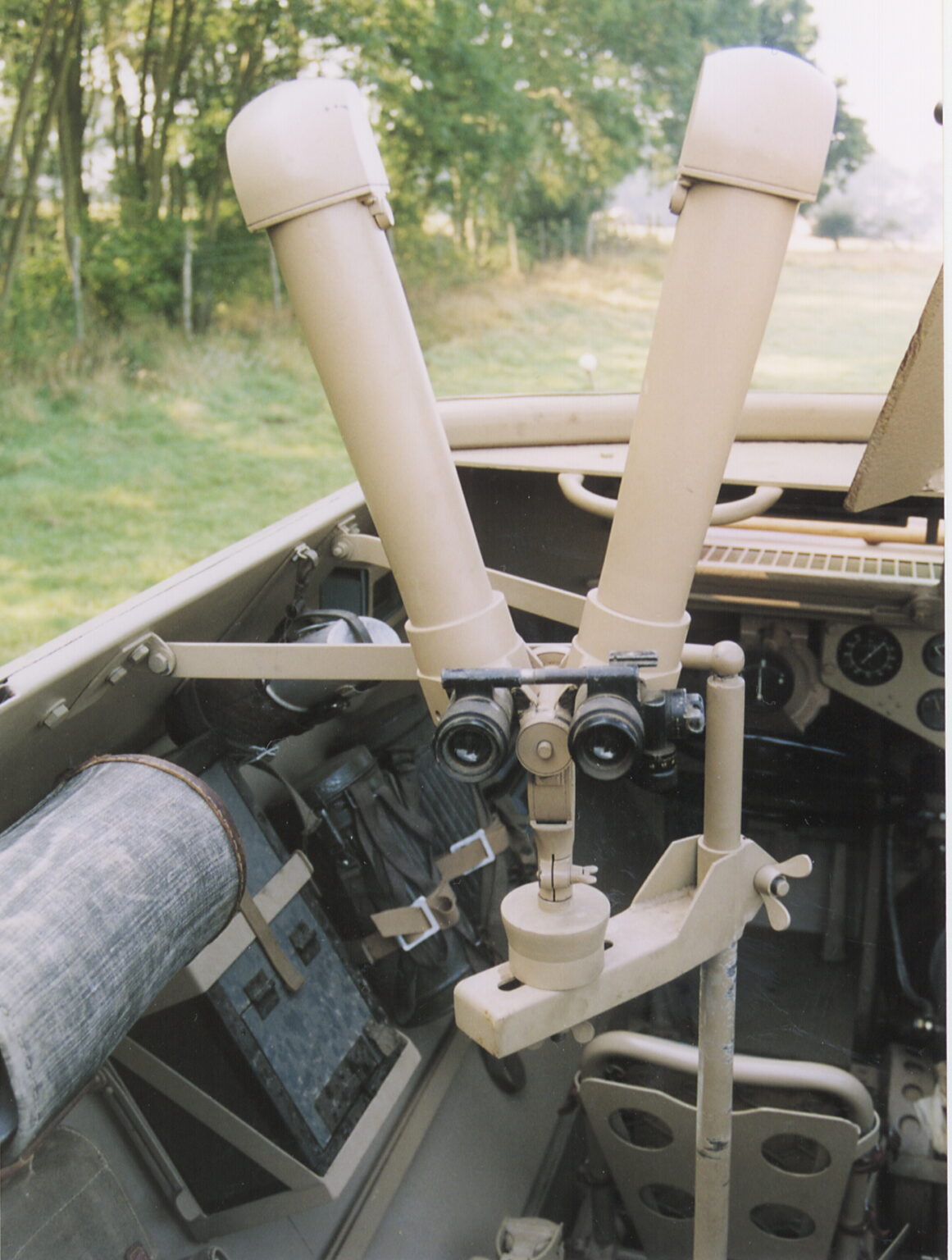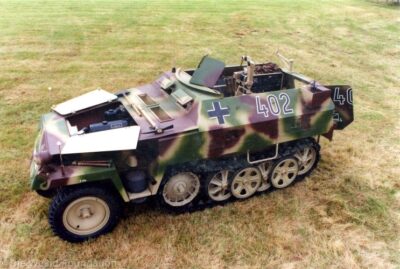This vehicle is no longer part of the collection but was restored in the Foundation’s workshops. Its body and chassis have since been used to further the restoration of two other vehicles.
Introduced in mid-1941 this version was used as a forward observation vehicle for assault gun batteries and an armoured observation post of a Nachrichtenzug within organic Aufklärungs Abteilung . Equipped with primarily with FuG 4 and FuG 8 radios, and a special observation mount and “scissors” scope.
A typical example is the SS-Panzer-Aufklärungs-Abteilung 1 LSSAH which in June 1944 would have included a Nachrichtenzug that contained 12 of these SdKfz 250/5.
The Restoration
The chassis was found in northern France in the hands of a private collector. The original armour had long since been lost, replaced instead with a functional set of controls mounted on the original firewall for its post-war role as a timber yard tractor.
What made this find all the more exciting was the discovery of the chassis plate giving the date of manufacture and the assembly plant. The Aufbaunummer (body number) and manufacturer's code reveals that the vehicle was manufactured as an early version of the 250/5 neue in 1943.
Although it lost its original body 60 years ago, the vehicle’s post-war usefulness in the timber yard ensured its survival. For the first time we were able to see the unaltered layout of the complex centralised lubrication system. In addition the original battery isolation switch was still in place. Details such are these very important in understanding the design and development of a vehicle.
This was a very complete original chassis and a very rare find. The revelations continued as the vehicle was stripped down. It was obvious it had seen hard use since the war, evidenced by the deep layers of oil soaked wood shavings all over the floor of the tub. Their presence had cocooned the internal working parts for over 60 years. There was no need to heat, press, soak or wrench parts. In most cases a spanner was sufficient.
The running gear had not fared as well. The tracks were a wreck, as were the bearings and rollers in the drive sprockets. All of this was to be expected given the vehicle’s hard life. These were not, however, insurmountable problems. Each link was stripped, cleaned and blasted. Repairs were carried out and then new bearing races, needle roller bearings, oil seals, dust shields and track pins fitted. New rubber pads were fitted. The bearings in the final drives were renewed and the brake drums skimmed.
The engine and gearbox were rust free. The engine had even retained the white stencilled D7p on the engine block side denoting its origins as a 250 SPW. The heads were skimmed, pistons replaced and new sleeves and gaskets fitted. The gearbox was in good condition requiring only a change of bearings and cleaning. The universally tricky selector did not present any nasty surprises but required a lot of cleaning work.
The foot pedals were complete only requiring dismantling, cleaning and rebuilding with new components where necessary. The hand brake assembly was the same - only the springs and seals in the hydraulic cylinders had to be replaced.
An original dashboard of suitable vintage was sourced and correctly renovated instruments and data plates took their place.
The body needed a lot of work. Side bins had to be fabricated. The front wings also had to be made using original fenders as patterns. The top of the rear hook had snapped off but was rebuilt using the original parts.
The radios took some sourcing as the MWEC type is relatively rare. We had fortunately retained a spare 30 watt sender from a past project. The plugs, cables and various other parts came from our stores or shows around Europe.
The paint scheme and unit markings are of an historic vehicle captured in a well-known series of stills taken from an original cine sequence. These pictures show a reconnaissance element of Peiper's battle group probing forward areas in the early stages of the Ardennes offensive. The finish is based on one of the 250s in this column.


